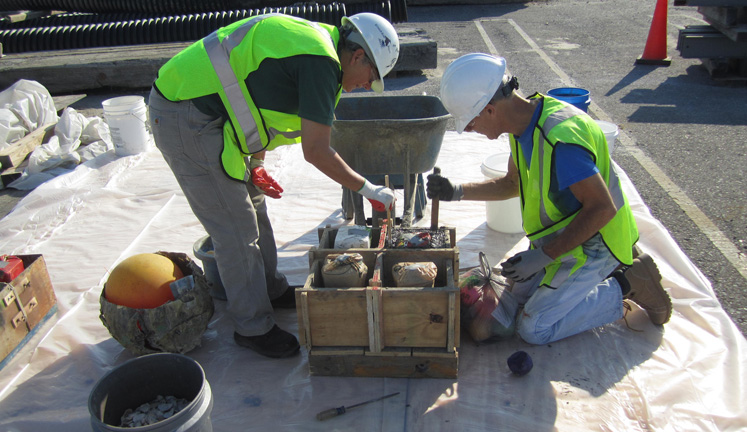Oyster Bergs
The Partnership has collaborated with the Elizabeth River Project (ERP) to invent a new way to bring back the Elizabeth River oyster, called “Oyster Bergs.” These modestly sized structures were designed for home-owner installation, as they are not so heavy or cumbersome that they require heavy equipment to install.
Oyster Bergs are inter-locking concrete blocks placed in the water to provide critical oyster habitat and help reduce erosion. These blocks mimic oyster reefs by offering a hard surface for the baby oysters (called spat or larvae) to attach.
The Lafayette Wetlands Partnership and SKW Constructors (an ERP “River Star Business”) worked together to build oyster-bergs with excess concrete from the Norfolk to Portsmouth Midtown tunnel construction. SKW, a joint venture (Skanska, Kiewit, Weeks) designed and built the tunnel.
SKW had asked Elizabeth River Project to help find ways to use their excess concrete for oyster restoration. Lafayette Wetlands Partnership’s Michael Berg designed and built most of the oyster block molds. The Oyster Bergs were created from excess concrete at the SKW construction site, with most of the labor performed by volunteers. More recently, the bergs have been make with privately donated concrete or that donated by the Chesapeake Bay Foundation’s Oyster Restoration Program at Gloucester Point.
As of August 2018, about 400 blocks have been made and deployed in oyster reefs. There are currently about 100 bergs being deployed or are awaiting permit approval for installation. Most of the 100+ blocks have been deployed or are spoken for and are awaiting permit.




